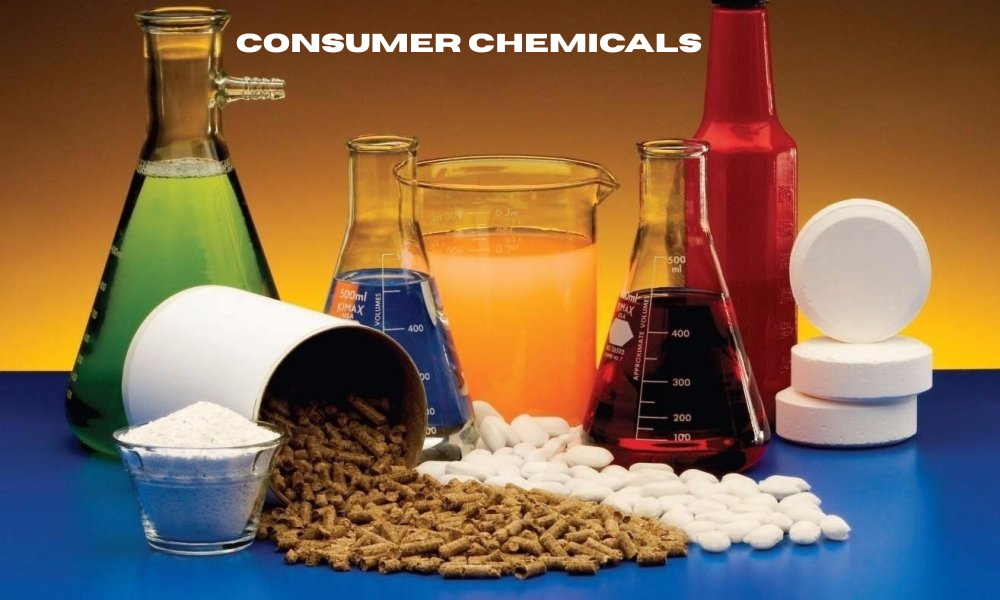Consumer chemicals play a significant role in the food and beverage industry by enhancing the production, preservation, safety, and quality of products. These chemicals are used in various stages of food manufacturing, from processing to packaging, and help meet consumer demands for convenience, shelf life, and safety. Here’s a look at their key roles:
1. Preservatives and Shelf-Life Extension
- Role: Chemical preservatives are added to food and beverages to prevent spoilage, inhibit the growth of harmful microorganisms (such as bacteria, molds, and yeasts), and extend the shelf life of products.
- Examples: Sodium benzoate, potassium sorbate, and nitrates are common preservatives used in products like canned goods, beverages, and processed meats.
2. Flavor Enhancers
- Role: Flavor chemicals enhance or modify the taste of food and beverages, making them more appealing to consumers. These additives can either amplify existing flavors or add new ones.
- Examples: Monosodium glutamate (MSG), artificial sweeteners like aspartame, and natural flavor extracts (e.g., vanilla or citrus) are used to improve taste without increasing sugar or fat content.
3. Colorants and Dyes
- Role: Color additives are used to make food and beverages more visually appealing, ensuring consistency in appearance and aligning with consumer expectations.
- Examples: Artificial dyes (e.g., Red 40, Yellow 5) and natural colorants (e.g., beet juice, spinach powder) are used in products like candies, drinks, and processed foods.
4. Emulsifiers and Stabilizers
- Role: Emulsifiers help blend ingredients that would otherwise separate (e.g., oil and water), while stabilizers maintain texture and consistency in products, particularly in products with high-fat content.
- Examples: Lecithin, mono- and diglycerides, and carrageenan are commonly used in products like salad dressings, mayonnaise, ice cream, and baked goods.
5. Antioxidants
- Role: Antioxidants prevent or slow down the oxidation process, which can lead to rancidity, loss of flavor, and discoloration in food products.
- Examples: Ascorbic acid (vitamin C), tocopherols (vitamin E), and butylated hydroxyanisole (BHA) are often used in oils, snack foods, and beverages to maintain freshness.
6. Acidity Regulators
- Role: Acidity regulators adjust the pH levels of food and beverages to improve taste, enhance preservation, and ensure the proper texture and consistency of the product.
- Examples: Citric acid, phosphoric acid, and sodium bicarbonate are used in products like soft drinks, candies, and processed foods to balance acidity.
7. Thickeners and Gelling Agents
- Role: These chemicals alter the texture and consistency of foods and beverages, helping to create desirable textures, such as creaminess or gel-like properties.
- Examples: Agar-agar, pectin, and xanthan gum are common in jellies, jams, sauces, and dairy products like yogurt and pudding.
8. Food Safety and Sanitization
- Role: Consumer chemicals are also used for cleaning and sanitizing equipment, utensils, and surfaces in food processing plants, ensuring that products are free from contaminants.
- Examples: Chlorine-based sanitizers, hydrogen peroxide, and peracetic acid are used to disinfect surfaces and equipment in food production.
9. Nutritional Fortification
- Role: Chemical compounds are often added to foods and beverages to enhance their nutritional value, ensuring they meet dietary needs or provide specific health benefits.
- Examples: Vitamins (e.g., vitamin D), minerals (e.g., calcium), and fiber additives are incorporated into products like breakfast cereals, milk, and energy drinks.
10. Packaging and Preservation Chemicals
- Role: Chemicals used in packaging, such as food-grade plastics, coatings, and films, help preserve the quality of food by protecting it from light, air, and moisture. Some packaging materials may also include antimicrobial agents to further extend shelf life.
- Examples: BPA (bisphenol A)-free plastics, vacuum sealing, and modified atmosphere packaging (MAP) techniques are commonly used in packaged food products.

















